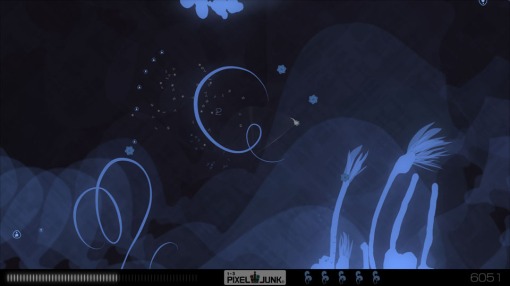“The Year of …………” – Aesthetic

Unlike Narrative, aesthetic elements have been present since the very birth of video-game as a medium. It’s then by no means a surprise to observe how far they’ve come as a complement to the interactive dimension. On the indie front, far from the censoring eye of money hungry producers, audiovisual marvels such as “PixelJunk Eden” and “Echochrome” showed the highest of cares with video-game’s aesthetic expression. “Eden”, a game entirely developed around the work of its art and sound designer, Baiyon, delivers one of the most original and stylized approaches to art design and soundtrack composition of the year, a game that feeds so much on its aesthetic expression, that only manages to feel downtrodden on its interactive counterpart. “Echochrome”, inspired by the notorious works of M.C. Escher, delivered a minimalist interpretation to Escher’s paradoxical works on perspective and geometry, accompanied by Hideki Sakamoto’s erudite compositions (“Yakuza 2”, “Yakuza Kenzan”), which undoubtedly delivers the best soundtrack of the year [thanks to Dieubussy for that one, if it weren’t for him, I’d probably miss it].

On a lesser note, I can’t but mention “Braid”, with its surprisingly cohesive licensed soundtrack, perfectly in balance with its picturesque art design; surely, one of the most balanced aesthetic works of the year. To top it all off, a word of appreciation to “Mega Man’s 9” retro-aesthetic, unheard of in such a popular release. Though I am the last person on Earth who would enjoy “Mega Man’s” childish, hardcore approach to game-design, I find it takes a great deal of courage for Keiji Inafune and his team to consistently adopt an 80’s aesthetic, complete with low-definition artwork and soundtrack, in a 2008 release. It’s an example, and a notable precedent for designers everywhere; a remainder that aesthetics’ power goes far beyond the quantity of pixels and polygons with which games are rendered. Aesthetic is all about interpreting reality in a way that will force a particular emotional reaction on its audience, and that’s exactly what “Mega Man 9” accomplishes by forfeiting common “video-game” sense – it takes people back to the infancy of their video-game-ish musings.

And yet, despite the startling aesthetic evolution that can be felt in most indie productions, top-tier games insist on a mostly “dark and gritty” visual style, where gray is the color around which most palettes revolve. Their musical background accompanies that same line of thought, orchestrations mostly reduced to a series of banal epic themes, increasingly simplistic in nature, with forgettable compositions serving as auditive filler for most of each video-game’s length. It’s then a breath of fresh air to lay eyes and ears on neoplasticism influenced “Mirror’s Edge“, a strikingly white visual tour de force, brimming with bright lights and shockingly vivid colors, splattered through the cleanest of scenarios, drawn along the most geometric of lines. The accompanying soundtrack, despite one or two unfortunate pop nuances, is smooth and atmospheric, avoiding altogether the “Wagner-made-dumb” refrains present in most blockbuster titles. Let’s hope “Mirror’s Edge” shows mainstream developers that colors aren’t a bad thing.